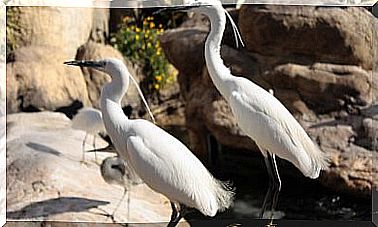5 Species Of Bats

Bats are the only mammals that can fly. Thanks to this unique characteristic, they have been able to settle on almost the entire planet. Despite the superstitions about them, almost all feed on fruit or insects. We invite you to discover these amazing mammals.
Bat species overview
Bats are the second largest family in the animal kingdom, only behind rodents. It is estimated that there are almost 1,200 different species of bats, although the number is increasing as new species are discovered every so often.
There are bats almost everywhere on the planet: except for the poles, they have spread all over the world. As can be expected in such a large family, this has led to their evolution very differently: the smallest bats weigh just a few grams, while the largest weigh almost a kilogram.
1. Common bat
This is, among the species of bats in Europe, the smallest: they are barely six centimeters long and between 20 and 25 centimeters wide with outstretched wings. They are brown or grayish in color, sometimes almost black. The belly has a lighter shade.
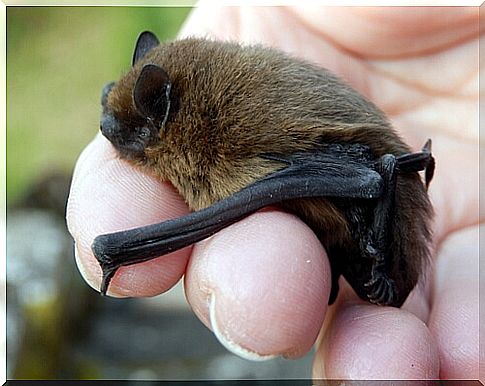
They have small ears and a short snout. They hibernate from the end of autumn until the arrival of spring. They live in large groups, both while awake and throughout the winter.
This type of bat lives throughout the Iberian Peninsula and the Balearic Islands, in urbanized areas: they are the small bats that can be seen at dusk on the beaches or in towns near the forests. They feed on small insects such as beetles or mosquitoes.
2. Flying fox
Instead, the flying fox is one of the largest bat species out there. It feeds only on fruit and flower nectar, so it has an important pollinating function in its habitat.
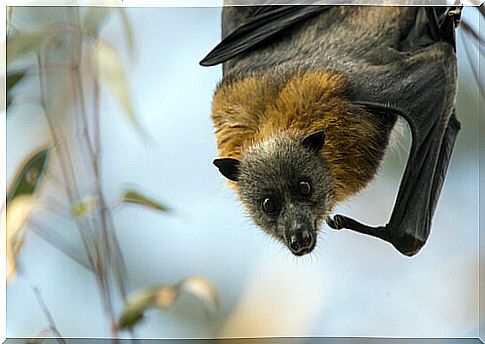
It does not use the echolocation system, but is guided by its sight and smell, unlike many other species of bats whose vision barely allows them to distinguish fuzzy shapes or light from darkness.
As its name suggests, its face is reminiscent of a fox: it has a long, sharp snout, large eyes compared to other animals of its species, and erect, triangular ears. Its body is covered with hair and it is reddish in color.
It lives on some islands in Oceania: the Malay peninsula, the Philippines, Sumatra, Borneo … It is not considered in danger of extinction, although there is a small alarm due to the decrease in its population and it is being followed closely.
3. Vampire
Vampire bats are a suborder within the species. Of these, only three feed solely on blood, despite what the legends say. Physically, they differ from fruit bats in that they have a short, flat snout and small ears.
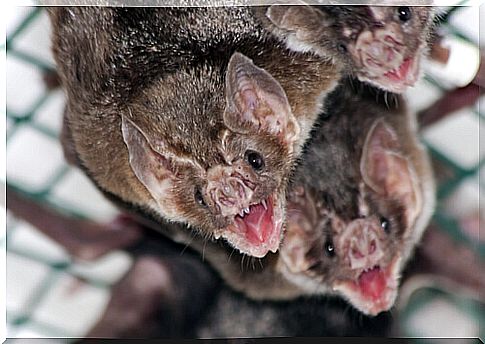
In order to achieve their unique diet, they are able to see the infrared radiation emitted by bodies containing blood and clearly hear the slow breathing of sleeping animals : this way they know where the arteries are located, which are easier to access, and when they should approach.
Unlike the rest of bats, they are nocturnal and only come out when it is completely dark. Their prey are usually large pieces of livestock or birds, and there is one species that can also feed on humans.
These three species are spread across America: they can only be found in certain parts of Mexico, Chile, Argentina, and Brazil. The greatest danger they pose to humans is the transmission of parasites or viruses such as rabies, although their transmission is very rare.
4. Pig-nosed bat
As its name suggests, the most distinctive feature of this animal is its nose, which is reminiscent of a pig’s. Here the differences end, since this bat is much smaller than pigs: it weighs just two grams and is considered one of the smallest mammals that exist.
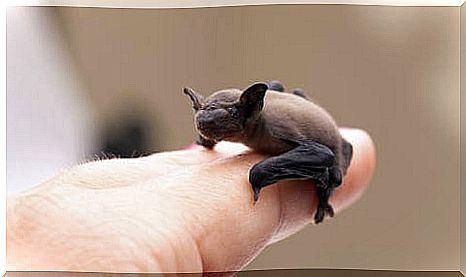
It lives in western Thailand and part of Burma, and it lives in very humid areas, such as in caves near the banks of rivers. It is considered to be in danger of extinction.
5. Southern long-eared bat
This is another of the species of bats that live in the Iberian Peninsula. However, its habitat is in wooded areas far removed from human settlements and in the treetops.
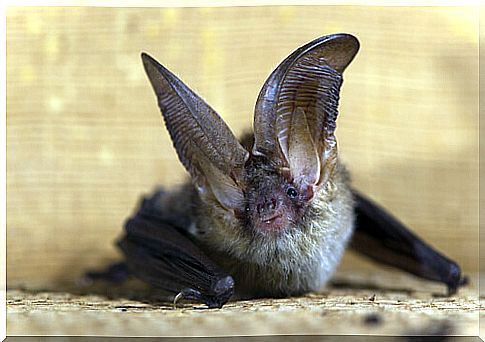
As its name suggests, its ears are extraordinarily long and, when at rest, it picks them up behind its head. The ears are so large that they can double in size to the head. Its body is medium in size: between three and six centimeters in length and almost 25 in wingspan, so its ears are easily distinguishable.
Bats often appear in horror stories, but nothing is further from reality: the vast majority of them feed on fruits or insects and are harmless to humans. Some fulfill a pollinator function and control of vermin pests.



